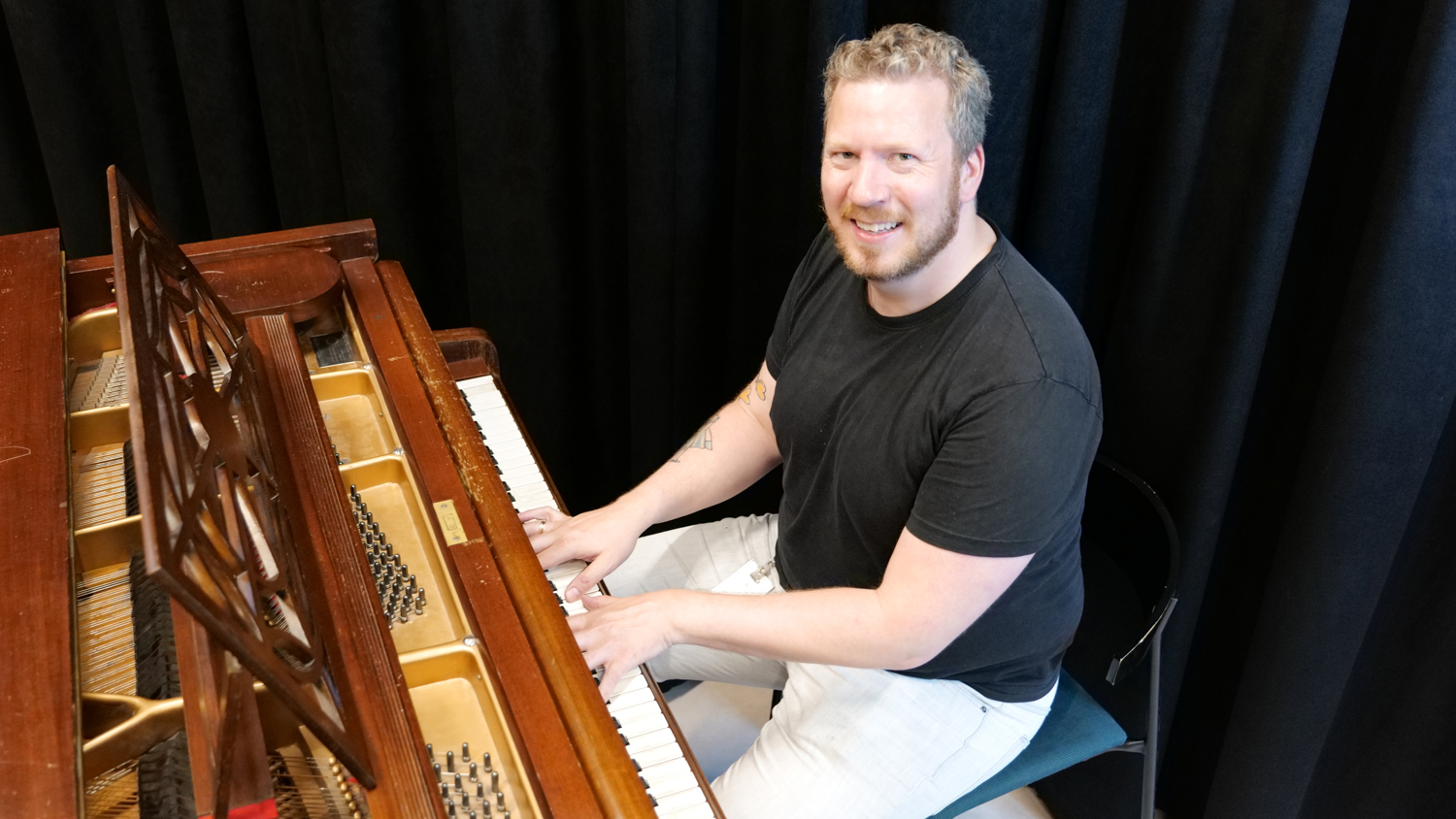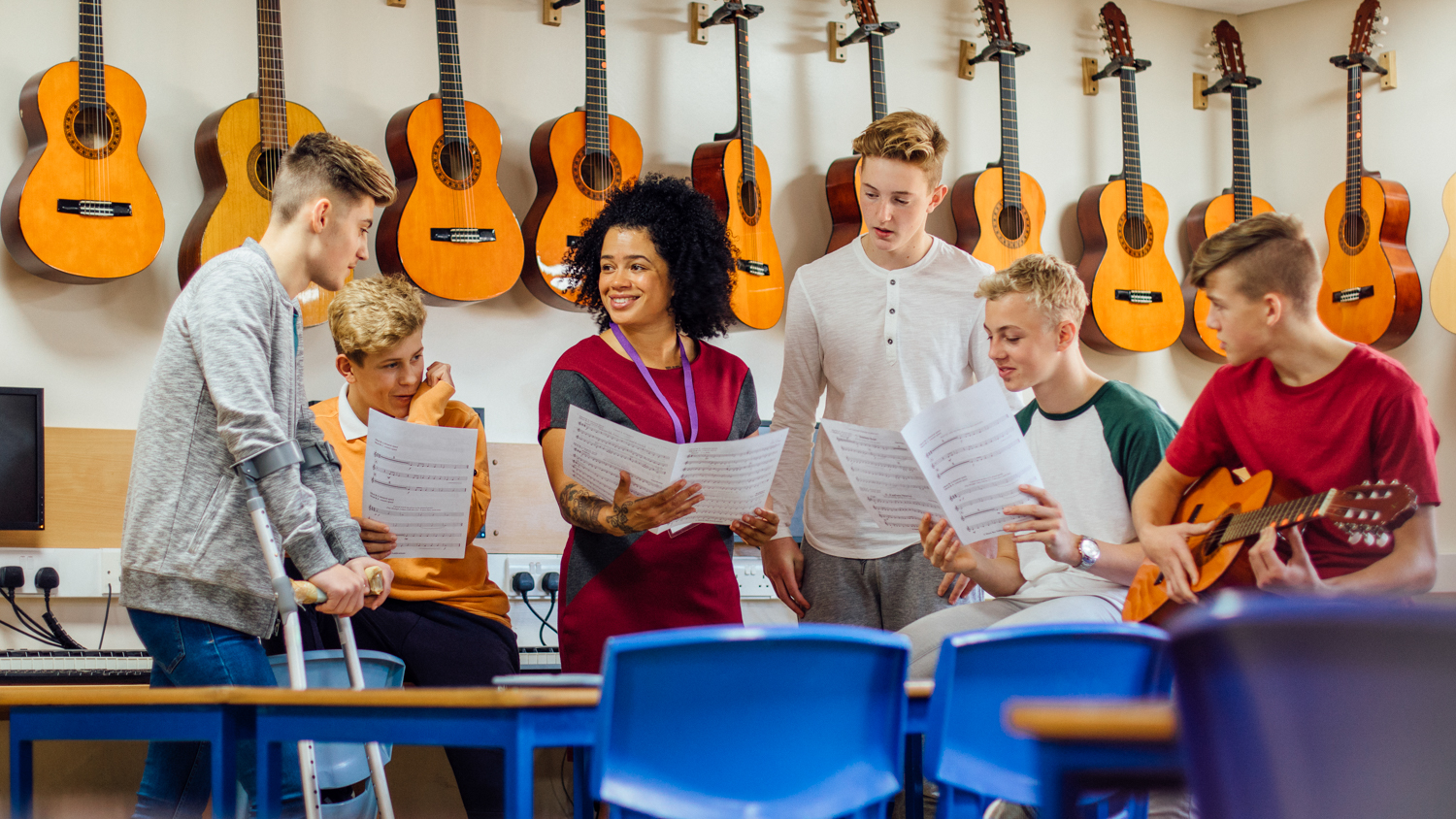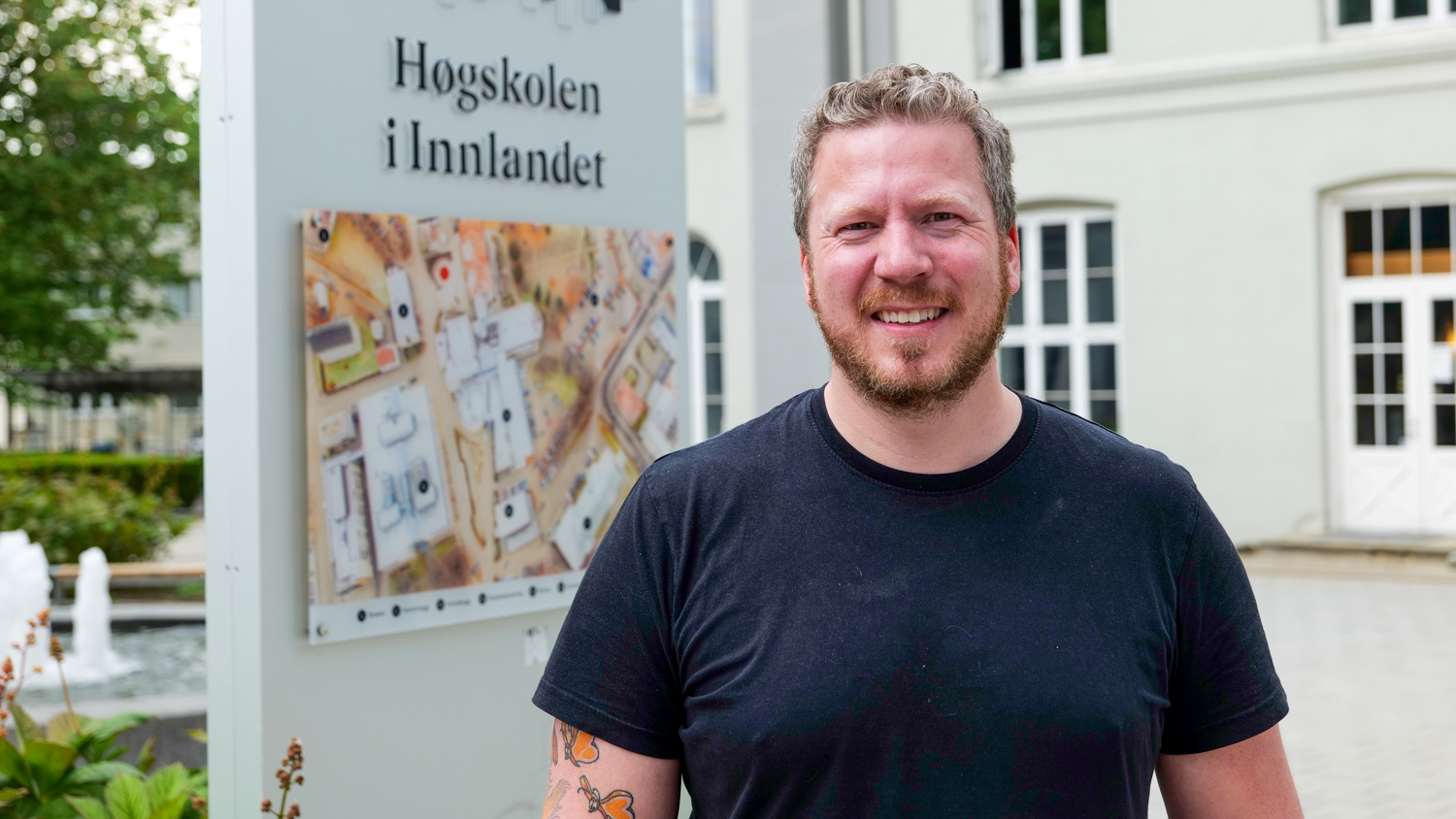Eirik Skjelstad is in the final stages of his doctoral research, where he has examined how music education in Norwegian public schools approaches gender and sexuality perspectives.
– The teachers constantly face conflicting dilemmas that are difficult for them when they try to challenge stereotypes and teach their students about these topics, says Skjelstad.
In a recently published article, co-authored with Professor Live Weider Ellefsen, he has identified some 'discords' concerning these topics.
Interesting and cool, but…
Skjelstad has based his research on the competence goal in the new music curriculum for Year 7 in Norway.
It states that pupils should be able to 'examine how gender, gender roles, and sexuality are portrayed in music and dance in the public space, and create expressions that challenge stereotypes'.

Altogether, Skjelstad has conducted group interviews with 14 teachers across the country. The teachers work at schools with 400 or more pupils.
What he was interested in were the teachers' experiences regarding fulfilling these competence requirements. He wanted to have a discussion in these groups about what actually happens in the classrooms.
– What is the reason for you wanting to work with this?
– It is because my first thought when the new curriculum was introduced was that it was cool that they included gender and sexuality in several subjects. My second thought was that it was interesting that they included it in music education. But then I thought – do music teachers feel competent in this?
Gender and sexuality are not an integrated or systematic part of music teacher training in this country. Eirik, who has a background as a music teacher himself, wanted to find out if they feel equipped for this task.
Caught in a dilemma
How music teachers relate to and interpret this competence goal turned out to be two-sided.
– The teachers say it is very challenging. They are like – damn! – am I really supposed to include gender and sexuality in my teaching! Many teachers point out that the pupils barely know basic music theory, and now they are expected to dive into these topics, says Eirik Skjelstad.
Many of the teachers he has interviewed feel that a great risk is connected to addressing these competence goals.
– They tell me they are afraid of several things. For example, that the pupils might be too immature to grasp these topics, or that the pupils' parents might react to how they execute this education and call them.

BUT – at the same time, there is a strong understanding that this is important.
– So it is not a matter of reluctance from the teachers?
– No, no – not at all!
That is why Eirik Skjelstad uses the theoretical concept 'ideological dilemma' in his dissertation.
– On the one hand, the teachers see twelve-year-olds who are very mature, and who are constantly exposed to gender and sexuality everywhere, through music, social media, YouTube and TikTok, explains Eirik Skjelstad.
– On the other hand, they see a twelve-year-old child, immature and someone who cannot understand this. That is the dilemma for the teachers – where do I position myself between these two? the teachers ask themselves, according to Skjelstad.
– How do the teachers approach this teaching?
– The teachers have different approaches. Some show well-known artists like David Bowie, Sigrid and Harry Styles, while others use 'russemusikk' (teenage party music) and hip-hop music as a starting point to discuss the competence goal and how boys and girls are portrayed. In some cases, they choose not to address the topic at all and instead focus on other things.
Unconsciously perpetuating gender roles
However, here a new dilemma arises, according to the researcher. Even though the teachers have the best intentions and aim to do the right thing according to the curriculum, they themselves contribute to perpetuating a stereotype.
– For example, they might say that the artist Sigrid breaks gender roles because she wears a big t-shirt and jeans. But then we implicitly understand that wearing trousers means you are masculine, but it is just a piece of clothing, right? asks Skjelstad.

Another example is teachers' encounters with pupils who have changed gender. Almost all the teachers Eirik has spoken with have experienced this.
– For example, they might say they met a girl who wanted to become a boy. They might then say that she always played with other boys, had short hair, and that this made it natural. Of course she was a boy!
The teachers are positive about what they encounter, but at the same time, they reinforce what they aim to break down in their teaching.
– If we are to challenge a stereotype or talk about gender roles, we cannot expect anyone to use repertoires they do not have. Teachers, like you and me, are surrounded by the same cultural expressions in the same culture, says Eirik Skjelstad.
The aim of the study was not to criticise teachers for their views on such matters.
– Instead, we hoped to highlight the importance of increasing focus on gender diversity and gender-expansive identities in teacher education, says Skjelstad.
– We believe teachers should be given tools and resources to prepare them to handle an increasingly complex landscape of gender-expansive pupils and queer identities, which are very present in a modern classroom.
- Read the full article here: Challenging Stereotypes? Norwegian Music Teachers’ Repertoires on Gender Roles and Gender-Expansiveness
Music education is a suitable place
There has been a shift in focus on these topics in Norway in recent years.
According to Statistics Norway's 2021 quality of life survey, 4.4 percent of all respondents in Norway identify as queer. Among those between the ages of 18 to 24, the percentage is 10.8.
– This could indicate a generational shift in self-identification, according to Skjelstad.
– Our study is hopefully one of many upcoming studies that can help establish a knowledge base for all teachers approaching gender and sexuality topics in their teaching, says Eirik Skjelstad.
– Why is music education a suitable place for this type of teaching?
– Good question! I think it is about risk. I believe there is less risk in having a gender and sexuality perspective in a subject like music where there are already so many colourful, gender-creative, and gender-challenging people in the public space that are easy to use as a starting point for teaching about these topics.
– Why is this research important, Eirik?
– We actually have a duty and a responsibility to create safe education and a safe school for everyone. All children have the right to be cared for. My research is important because it highlights that gender diversity is also part of the concept of diversity, which is a concept we love to talk about in schools today. And it should have a greater focus, he concludes.
Contact information:
- eirik.skjelstad@inn.no
- Phone
- +47 62 51 77 90



